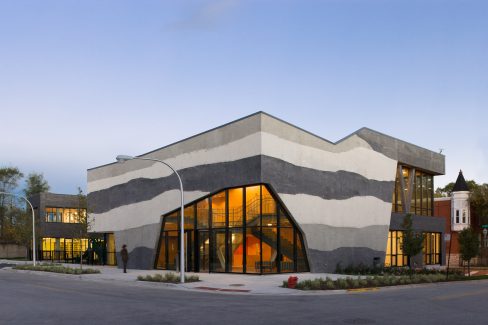Chicago’s Architecture Desert
This map, originally compiled during our Lavezzorio Community Center project for SOS Children’s Village Illinois, demonstrates the “Architecture desert” phenomenon in Chicago.
About the Map
The map combines data from the report City of Chicago Community Areas, prepared by the Department of Geography at the University of Illinois at Chicago, and from 1990 Census Maps from the University of Chicago Map Collection. Each individual hash mark represents “notable architecture,” as categorized by the American Institute of Architects’ Chicago Guide to Architecture.
Many of Chicago’s communities are conspicuously absent of hash marks, demonstrating the “Architecture desert” phenomenon: money, power, and racial and ethnic privilege beget Architecture with a capital A.
Our SOS Children’s Village Lavezzorio Community Center in Chicago’s Auburn-Gresham neighborhood is one example of how architecture can have a positive impact on community. Beyond its social benefit for foster care families, the Community Center is a point of pride for the whole neighborhood; despite its exposed concrete facade, it has never been tagged.
Since 2008, Studio Gang has continued to address Chicago’s Architecture deserts, designing projects for the Avondale (WMS Boathouse at Clark Park) and Hegewisch (Ford Calumet Environmental Center) neighborhoods. By continuing to work with nonprofit organizations and calling attention to the discrepancy of resources invested in our communities, Studio Gang hopes to encourage public officials, developers, and our architect peers to pursue positive, impactful investments in our urban neighborhoods.






